Teaching Double Consonants: A Guide for Teachers
Phonics, Spelling, & Grammar Resources
Teaching spelling can be a challenging task, especially when it comes to Teaching Double Consonants and mastering the rules for these words. However, understanding these rules is crucial for helping young learners develop strong spelling skills. In this comprehensive guide, we’ll explore the ins and outs of double consonants and provide practical tips and examples for elementary teachers to use in their classrooms.
What Are Double Consonants?
Double consonants are pairs of consecutive consonants within a word. Knowing when to use them can significantly impact spelling and pronunciation. For example, words such as “puppet,” “summer,” and “wellness” feature two consecutive identical consonants.
Double Consonant Spelling Rules
Learning spelling rules provides essential guidance for determining when to use a double consonant in English words. Understanding these rules helps students make informed decisions about spelling patterns and pronunciation clarity.
For instance, knowing that a single-syllable word ending in one vowel followed by one consonant often requires a double consonant before adding a suffix like “-ing” or “-ed” allows students to confidently spell words like “hop” as “hopping” or “stop” as “stopped.
Similarly, recognising the stress pattern in multi-syllable words, such as doubling the final consonant only when the final syllable is stressed, aids students in spelling accurately, as in the case of “begin” becoming “beginning.”
By internalising these spelling rules, students gain a solid foundation for making informed spelling choices, enhancing their overall spelling proficiency and language skills.
Double Consonant Rules
Here’s a summary of the Double Consonant Spelling Rules:
The Rabbit Rule
One important exception to the doubling rule is known as the “rabbit” rule. When a word ends in a short vowel followed by a consonant and the stress falls on the final syllable, the consonant is not doubled. Instead, the vowel is left short. For example:
- habit → habits
- rabbit → rabbits
- profit → profits
Common Problems and Teaching Strategies
Despite the straightforward rules, students may encounter difficulties when learning about double consonants. Here are some common problems and teaching strategies to address them:
Problem 1: Recognising the Need for Doubling
- Strategy: Use visual aids like charts or diagrams to illustrate the connection between double consonants and short vowel sounds. Provide plenty of examples and practice opportunities to reinforce the concept.
Problem 2: Remembering Spelling Patterns
- Strategy: Break down the rules into simple, memorable terms and encourage mnemonic devices or word associations. Regular spelling practice with feedback can also help reinforce the rules.
Problem 3: Confusion with Pronunciation
- Strategy: Incorporate phonics instruction alongside spelling practice and provide opportunities for oral practice to reinforce correct pronunciation.
Problem 4: Generalisation Errors
- Strategy: Provide explicit instruction on when the doubling rule applies and when it doesn’t. Highlight exceptions and encourage critical thinking skills.
Problem 5: Lack of Practice
- Strategy: Incorporate a variety of engaging activities and games to make spelling practice fun and interactive. Offer regular opportunities for independent practice and peer collaboration.
Double Consonants and Digraphs
As a side note it’s important to note that double consonants are not considered to be digraphs. A digraph is a combination of two letters representing a single phoneme or sound. Examples of digraphs include “ch,” “sh,” and “th.” In the case of “ff,” it represents two separate /f/ phonemes or sounds, not a single sound, so it is not considered a digraph.
Mastering the rules for double consonants is essential for young learners as they develop their spelling and phonics skills. By understanding these rules, including the “rabbit” rule, and providing targeted instruction and practice, elementary teachers can empower their students to become confident spellers.
Explore our range of teaching resources on double consonants to support your students in achieving success as learners.
Explore tags
Click to select the Double Consonant Resources
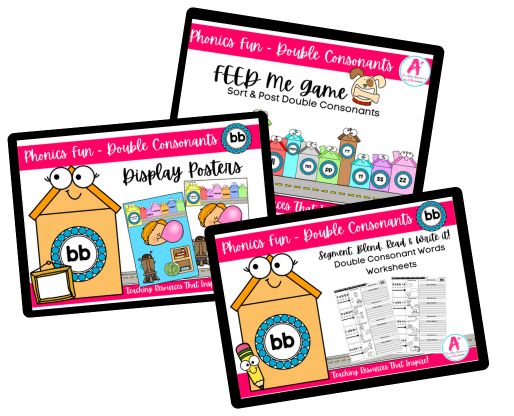
Double Consonants - bb
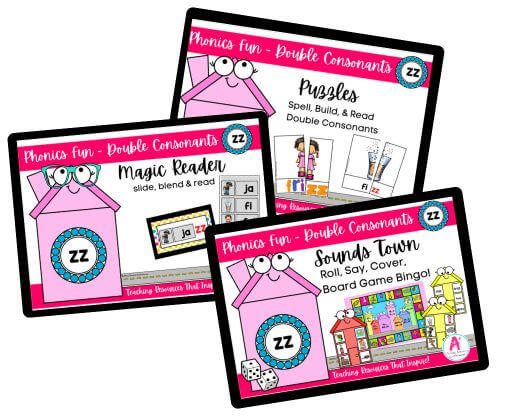
Double Consonants - zz
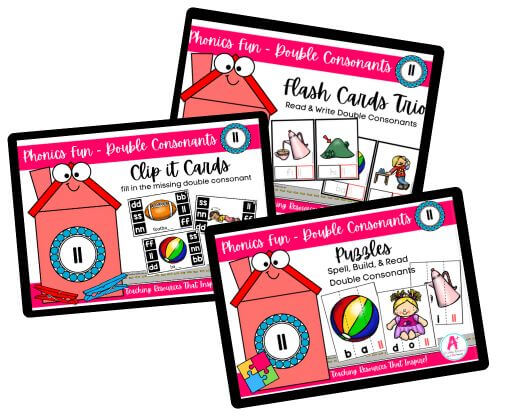
Double Consonant - ll
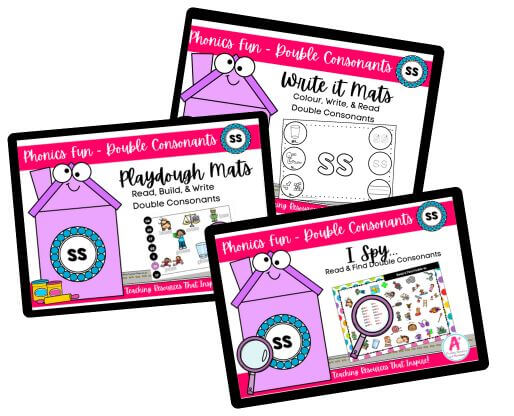
Double Consonants - ss
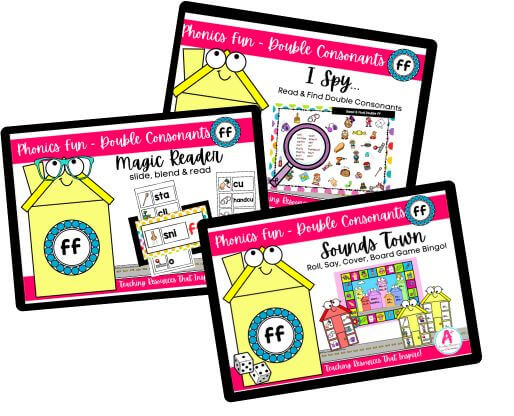
Double Consonants - ff
Can't find what you're looking for?
Send us a request! Use this form to request a resource. Please give details of the learning area, topic, year level, curriculum links. We’ll be happy to take a look to see if we can fit it in. Unfortunately a request does not guarantee we will be able to make it!
"*" indicates required fields
